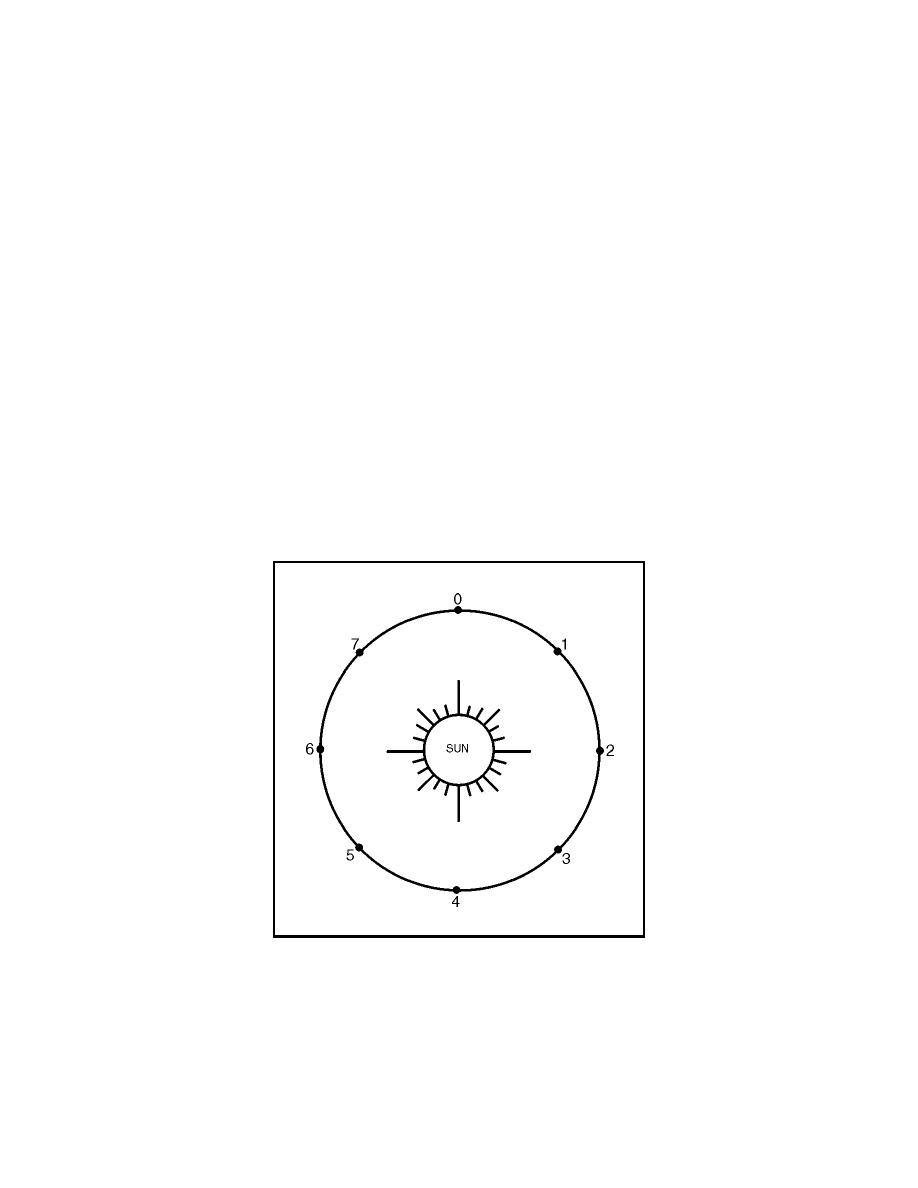
_______________________________________________________________________ Antennas
ohmic resistance is about 1 ohm for conductors of large diameter. The ohmic
resistance does not become important until the radiation resistance drops to
a value less than 10 ohms. This may be the case when several antennas are
coupled together.
RADIATION TYPES AND PATTERNS
4-52. The energy radiated from an antenna forms a field having a definite
radiation pattern. A radiation pattern is a plot of the radiated energy from an
antenna. This energy is measured at various angles at a constant distance
from the antenna. The shape of this pattern depends on the type of antenna
used. The following sections introduce the basic types of radiation (isotropic
and anisotropic) and their radiation patterns.
Isotropic Radiation
4-53. Some antenna sources radiate energy equally in all directions.
Radiation of this type is known as isotropic radiation. We all know the sun
radiates energy in all directions. The energy radiated from the sun measured
at any fixed distance and from any angle will be approximately the same.
Assume that a measuring device is moved around the sun and stopped at the
points indicated in figure 4-10 to make a measurement of the amount of
radiation. At any point around the circle, the distance from the measuring
device to the sun is the same. The measured radiation will also be the same.
The sun is therefore considered an isotropic radiator.
Figure 4-10. Isotropic Radiator
4-54. To plot the pattern shown in figure 4-10, assume that the radiation is
measured on a scale of 0 to 10 units and that the measured amount of
radiation is 7 units at all points. The measurements can be plotted on two
different types of graphs: rectangular-and polar-coordinate graphs. The
4-15


 Previous Page
Previous Page
